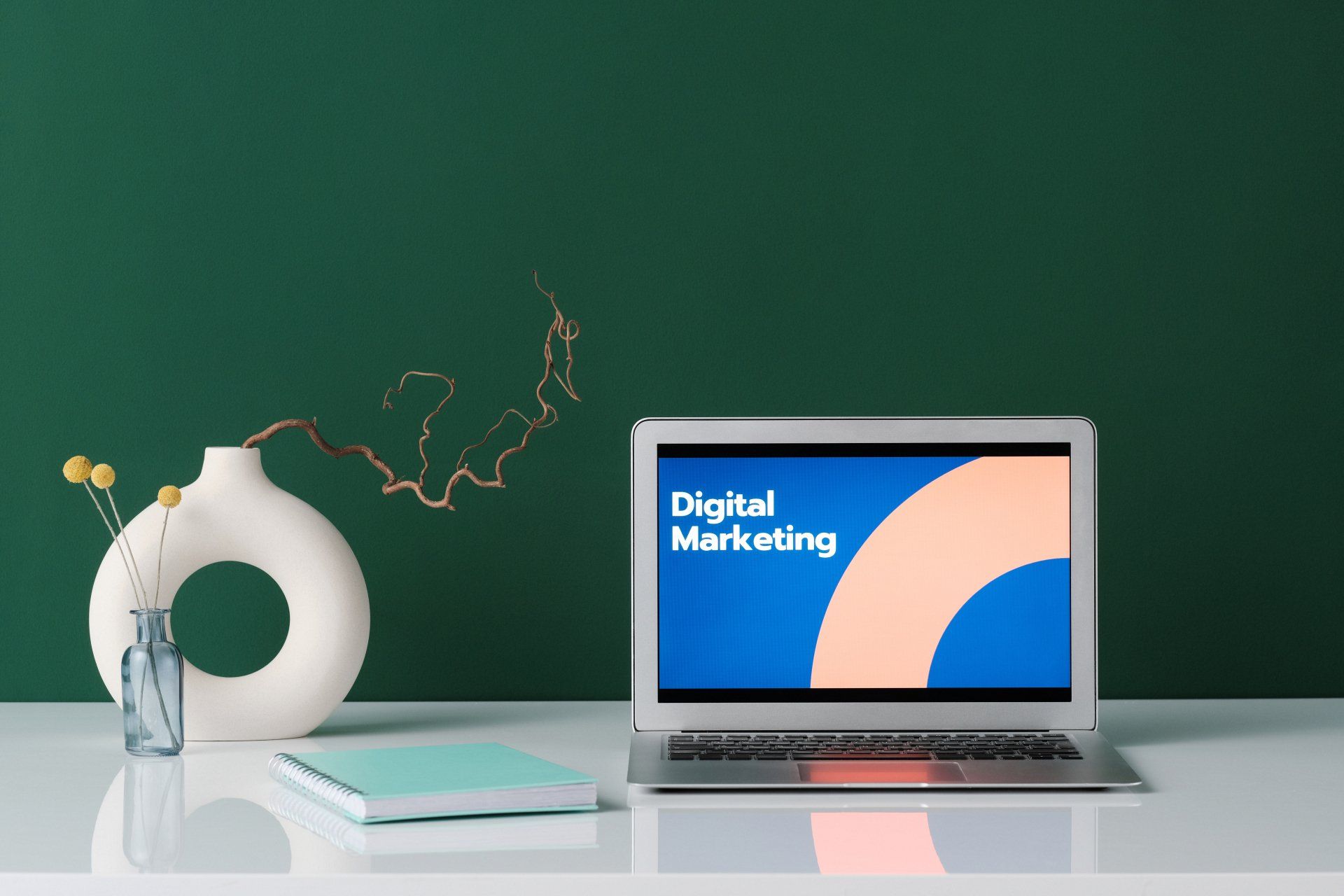Targeted Marketing for Your Plumbing Business
Targeted Marketing
Introduction:
Targeted marketing is no longer a mere buzzword; it's the cornerstone of success for your plumbing business. In this competitive landscape, casting a wide net and hoping for the best won't cut it. Instead, precision and efficiency are key. In this step-by-step guide, we'll delve into valuable tips that will transform your approach to marketing and elevate your plumbing business.
Step 1: Understanding Targeted Marketing
Targeted marketing is all about delivering the right message to the right audience at the right time. Rather than relying on luck, focus on precision. Understand your audience's needs, pain points, and preferences to tailor your approach.
Define Your Audience:
- The first step in targeted marketing is identifying and defining your audience. Who are your ideal customers? What are their pain points, needs, and preferences? Understanding your audience is the foundation of a successful targeted marketing campaign.
Craft a Tailored Message:
- Once you've defined your audience, it's time to tailor your message to resonate with them. Speak directly to their concerns and offer solutions to their specific plumbing issues. A generic message may not capture their attention, but a personalized one will.
Choose the Right Channels:
- Not all marketing channels are created equal. Select the platforms that align with your audience's behavior. Whether it's social media, email campaigns, or local community events, be where your potential customers are most likely to engage with your message.
Timing is Everything:
- Sending the right message at the right time is crucial for success. Consider the timing of your marketing campaigns in relation to your audience's habits and needs. For instance, if you offer emergency plumbing services, tailor your campaigns to be most visible during times when plumbing issues are more likely to occur.
Utilize Data and Analytics:
- Leverage the power of data and analytics to refine your targeted marketing efforts. Track the performance of your campaigns, analyze customer behavior, and adjust your strategy accordingly. This iterative process allows you to continuously optimize your approach for maximum effectiveness.
Step 2: The Power of Data
In the digital age, data reigns supreme. Utilize analytics and data-driven insights to unravel your ideal customers' behaviors and preferences. Every click, search, and interaction leaves valuable breadcrumbs that can guide your marketing strategy.
Collect Comprehensive Data:
- Start by implementing tools and systems that allow you to collect comprehensive data about your audience. From website analytics to social media metrics, gather information on user behavior, preferences, and engagement patterns. The more comprehensive your data, the better you can understand your audience.
Pinpoint Audience Preferences:
- Leverage data-driven insights to pinpoint your audience's preferences. Analyze which services or content resonate the most with them, and tailor your marketing efforts accordingly. By aligning your offerings with what your audience desires, you increase the likelihood of capturing their attention and loyalty.
Understand Behaviors and Trends:
- Dive deep into the behavioral patterns of your audience. Identify trends, popular search queries, and emerging topics within the plumbing industry. This understanding allows you to stay ahead of the curve, anticipating your customers' needs and positioning your business as a reliable solution.
Identify Pain Points:
- Data provides a window into the pain points and challenges your audience faces. Use this information to tailor your messaging, emphasizing how your plumbing services address specific needs. By showcasing your understanding of their problems, you position your business as a valuable solution provider.
Utilize Analytics Tools:
- Invest in analytics tools that can process and interpret data efficiently. Whether it's Google Analytics, social media insights, or customer relationship management (CRM) systems, these tools can unveil patterns that may not be immediately apparent, enabling you to make informed decisions.
Step 3: Segment and Conquer
The one-size-fits-all approach is obsolete. Excel in targeted marketing by segmenting your audience based on demographics, interests, and behavior. This allows you to customize your marketing efforts for maximum impact.
The Fallacy of One-Size-Fits-All:
- Gone are the days when a generic message could capture the attention of a diverse audience. Recognize the fallacy of a one-size-fits-all approach and embrace the idea that your customers are unique individuals with diverse needs and preferences.
Demographic Segmentation:
- Start by segmenting your audience based on demographics such as age, gender, location, and income. Understanding these fundamental characteristics allows you to create targeted campaigns that resonate with specific groups. For instance, the needs of a homeowner in a suburban area may differ from those of a business owner in the city.
Interest-Based Segmentation:
- Dive deeper into the interests and preferences of your audience. Identify common themes, hobbies, or lifestyle choices that unite certain segments. Tailor your content and messaging to align with these interests, increasing the likelihood of engagement and conversion.
Behavioral Segmentation:
- Analyze the behavior of your audience to uncover patterns and trends. How do they interact with your website? What types of content do they engage with the most? By understanding these behavioral cues, you can create campaigns that align with the way your audience navigates the digital landscape.
Personalized Marketing Efforts:
- Armed with segmented data, personalize your marketing efforts for each group. Craft messages, offers, and promotions that directly address the unique needs and preferences of each segment. This personalized approach enhances the relevance of your campaigns, fostering a stronger connection with your audience.
Utilize Targeted Channels:
- Different segments may prefer different communication channels. Some may engage more on social media, while others may respond better to email campaigns. Tailor your channel selection based on the preferences of each segment, ensuring your message reaches them where they are most receptive.
Step 4: Content Is King
Your content serves as the bridge between your business and your audience. Craft high-quality, valuable content that directly addresses the needs of each segment. Whether through blog posts, videos, or social media updates, your content should provide solutions, insights, and engagement.
The Content Bridge:
- Your content serves as the bridge that connects your business with your audience. It's not just about conveying information but establishing a dialogue, building trust, and providing value. Recognize the potential of your content to be a powerful conduit for communication.
High-Quality is Key:
- In a digital landscape saturated with information, quality stands out. Invest time and resources in creating content that is not only relevant but of high quality. This could include well-researched blog posts, professionally produced videos, or visually appealing social media updates.
Address Segment-Specific Needs:
- Tailor your content to address the unique needs of each segment identified through segmentation. Understand the pain points, preferences, and interests of your audience groups and craft content that directly speaks to them. This targeted approach enhances the relevance of your content, making it more likely to resonate.
Provide Solutions and Insights:
- Your content should go beyond promotional material. Position your business as an authority in the plumbing industry by offering solutions to common problems, sharing insights into industry trends, and providing valuable information. This positions your brand as a go-to resource for your audience.
Engage Your Audience:
- Encourage interaction and engagement with your content. Whether through comments on blog posts, likes and shares on social media, or participation in surveys, engagement is a two-way street. Foster a sense of community around your content, making your audience feel heard and valued.
Diversify Your Content Types:
- People consume content in various ways. Cater to different preferences by diversifying your content types. Consider creating blog posts, informative videos, engaging infographics, or hosting live Q&A sessions. This not only broadens your reach but ensures you capture the attention of diverse audience segments.
Step 5: Personalization and Automation
Leverage automation and personalization tools to streamline your marketing efforts. Automate routine tasks like email follow-ups and social media posting to save time and resources. Personalize your communications to create a genuine connection with your audience, making them feel seen and valued.
Automate Routine Tasks:
- Time is a precious commodity, and automating routine tasks can free up valuable resources. Utilize automation tools to streamline tasks like email follow-ups, social media posting, and data analysis. This not only saves time but ensures consistency in your marketing efforts.
Email Follow-Ups and Campaigns:
- Leverage automation for email campaigns, especially follow-ups. Set up automated responses based on customer interactions, ensuring timely and personalized communication. Tailor email content to specific segments, addressing their unique needs and preferences.
Social Media Scheduling:
- Maintain an active online presence without the constant need for manual updates. Use social media scheduling tools to plan and automate posts. Ensure that your content reaches your audience at optimal times, enhancing visibility and engagement.
Data Analysis and Reporting:
- Let automation tools handle the heavy lifting of data analysis. Track the performance of your marketing campaigns, measure engagement metrics, and generate reports automatically. This data-driven approach provides valuable insights for continuous improvement.
Personalize Your Communications:
- Personalization goes beyond just addressing customers by their names. Tailor your communications to reflect the unique needs and preferences of your audience segments. Use data collected through segmentation to create content that resonates on a personal level.
Create Connection Through Personalization:
- Personalized communications create a connection with your audience, making them feel seen and valued. Whether it's customized offers, personalized recommendations, or targeted content, this approach fosters a sense of loyalty and enhances the overall customer experience.
Utilize Customer Relationship Management (CRM) Systems:
- Implement CRM systems to centralize customer data and facilitate personalized interactions. CRM tools can automate customer interactions, track customer preferences, and provide a comprehensive view of each customer's journey with your business.
Step 6: Embrace Paid Advertising
Invest in paid advertising on platforms like Google Ads and social media to laser-target your ideal customers. Develop well-crafted ads that resonate with your segmented audience. Ensure your ad copy and visuals align with your customer's preferences.
Unlock Laser-Targeting:
- Paid advertising offers a precision that traditional methods can't match. Platforms like Google Ads and social media allow you to laser-target your ideal customers based on demographics, interests, and online behavior. This targeted approach ensures that your message reaches those most likely to convert.
Invest in Relevance:
- When diving into paid advertising, invest in well-crafted ads that are highly relevant to your segmented audience. Tailor your ad content to speak directly to the specific needs, preferences, and pain points of each identified segment. This relevance is the key to capturing attention and driving engagement.
Craft Compelling Ad Copy:
- Your ad copy is the first interaction potential customers have with your business. Craft compelling, concise, and clear copy that conveys your value proposition. Clearly communicate how your plumbing services address the unique needs of your audience segments.
Visuals that Resonate:
- In the visually driven world of online advertising, the importance of compelling visuals cannot be overstated. Choose images and graphics that resonate with your customer base. Visuals should complement your ad copy and reinforce the message you want to convey.
Utilize A/B Testing:
- Optimize your paid advertising strategy through A/B testing. Experiment with variations in ad copy, visuals, and calls-to-action to identify what resonates best with your audience. A/B testing allows you to refine your approach and maximize the effectiveness of your advertising budget.
Monitor and Adjust:
- Paid advertising is dynamic, and the digital landscape evolves quickly. Regularly monitor the performance of your ads and be prepared to adjust your strategy based on the data. Whether it's tweaking targeting parameters or refining ad creatives, adaptability is key to sustained success.
Step 7: Always Test and Optimize
Continuous improvement is the golden rule of targeted marketing. Avoid a "set it and forget it" mentality. Test different strategies, content types, and advertising approaches. Implement A/B testing to identify what works best for your business. Regularly analyze your data to refine and optimize your marketing campaigns.
Continuous Improvement is Key:
- The essence of targeted marketing lies in the pursuit of continuous improvement. Embrace the mindset that there is always room for enhancement, and your marketing strategies should evolve alongside the changing landscape of your business and industry.
Avoid 'Set It and Forget It':
- Resist the urge to adopt a "set it and forget it" approach. The digital realm is dynamic, and customer preferences evolve. Regularly revisit and reassess your marketing strategies to ensure they align with the current needs and expectations of your audience.
Experiment with Different Strategies:
- Don't be afraid to experiment with different strategies. Test the waters with diverse content types, engagement methods, and advertising approaches. A willingness to try new things allows you to discover what resonates best with your unique audience.
A/B Testing for Precision:
- A/B testing is a powerful tool in your marketing arsenal. Use it to compare the performance of different elements, such as ad copies, visuals, email subject lines, or landing pages. This data-driven approach provides valuable insights into what works best for your business and audience.
Regularly Analyze Your Data:
- Data is your compass in the marketing landscape. Regularly analyze the data generated by your campaigns. Understand customer behavior, measure engagement metrics, and identify patterns that can inform your optimization strategy. This iterative process ensures that you are always refining and improving.
Refine Your Marketing Campaigns:
- Armed with the insights gained from testing and data analysis, refine your marketing campaigns accordingly. Adjust your strategies, content, and messaging to align with what resonates most with your audience. This adaptability is essential in maintaining a strong and effective marketing presence.
Targeted Marketing as Your Secret Weapon:
- In the competitive plumbing industry, targeted marketing is not just a strategy; it's your secret weapon. By consistently testing, optimizing, and adapting, you position your business at the forefront, ready to meet the ever-changing demands of your audience.
Conclusion:
In the fiercely competitive plumbing industry, targeted marketing is your secret weapon. If you haven't embraced these strategies yet, it's time to start. Your competitors are likely already reaping the benefits. If you have questions or need guidance on implementing these tactics effectively, don't hesitate to reach out. I'm here to help you achieve exceptional results in your marketing endeavors.










